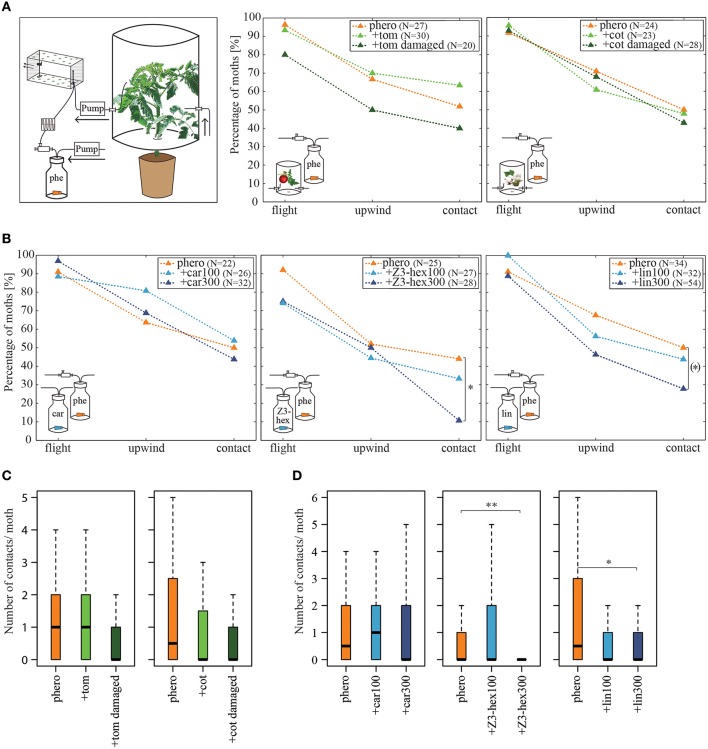Figure 2.
Influence of host plant headspaces on pheromone-guided flight behavior. (A) Percentage of moths attempting flight behavior, achieving upwind flight and making source contact, when simultaneously stimulated with the pheromone blend and a tomato (middle panel) or cotton (right panel) plant headspace. Plants were intact or damaged by larvae. The left panel highlights the changes in the odor stimulation device. The headspace of the plants was sucked via a pump through the wind tunnel. The pulsed pheromone stimulation was implemented as described in Figure 1. There was no significant difference in pheromone attraction when insects were stimulated simultaneously with undamaged or damaged tomato or cotton headspaces compared to pheromone stimulation alone (p > 0.05, Fisher's exact test, Bonferroni-Holm correction). (B) Percentage of moths attempting flight behavior, achieving upwind flight and making source contact, when simultaneously stimulated with the pheromone blend and the synthetic odorants β-caryophyllene (left panel), (Z)3-hexenol (middle panel) or linalool (right panel) each in two different concentrations (100 and 300 μg/μl). While β-caryophyllene did not affect pheromone-guided flight behavior, high concentrations of (Z)3-hexenol decreased the amount of moths contacting the source. A similar tendency was observed for linalool. Asterisks represent significant differences (p < 0.05, Fisher's exact test with Bonferroni-Holm correction). The bracket indicates significant differences without Bonferroni-Holm correction (p = 0.0426). (C) Number of contacts per individual moth for all tested males from (A). No differences in the number of contacts when different plant headspaces were used (p > 0.05, the Kruskal-Wallis test, Dunn's multiple comparisons test). (D) Number of contacts per individual moth for all tested males from (B). Moths had significantly fewer contacts when high dosages of (Z)3-hexenol or linalool were applied to the septa than when they were not (p < 0.05, the Kruskal-Wallis test, Dunn's multiple comparisons test). car, β-caryophyllene; cot, cotton; lin, linalool; phe/phero, pheromone; tom, tomato; Z3-hex, (Z)3-hexenol.

